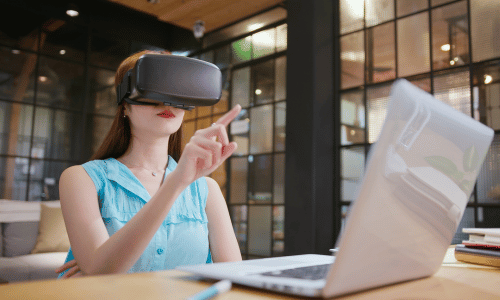
In an era where our smartphones seem to hold the world, it’s no surprise that they’ve also transformed the way we shop. Mobile commerce, or m-commerce, has not just entered the retail scene; it has exploded into it, revolutionizing consumer behaviour and setting new standards for retail engagement. This shift has not been subtle; it’s been monumental, marking the dawn of a new age in commerce.
Understanding the Shift
The transition from e-commerce to m-commerce reflects a broader shift in consumer preferences and technological advancements. With over 6.6 billion smartphone users worldwide, mobile devices are not just communication tools but gateways to vast digital marketplaces. The statistics speak volumes: mobile commerce sales are projected to hit $3.56 trillion by the end of 2021, a 22.3% increase over the previous year. This seismic shift signifies a fundamental change in how consumers interact with brands, demanding seamless, on-the-go shopping experiences.
Key Technologies Powering Mobile Commerce

At the heart of m-commerce’s meteoric rise are cutting-edge technologies that have redefined the shopping experience. Mobile wallets like Apple Pay and Google Wallet offer consumers a secure, convenient way to pay with a tap, while augmented reality (AR) enables virtual try-ons, bringing the fitting room to the living room. Artificial Intelligence (AI) personalizes the shopping journey, offering recommendations tailored to individual preferences, and blockchain technology ensures these transactions are secure and transparent. Together, these innovations have created a shopping ecosystem that is not just convenient but immersive and engaging.
Optimizing for Mobile-First Shopping
For businesses, the message is clear: mobile-first is not just an option; it’s imperative. Optimizing for mobile commerce means more than just making your website responsive. It involves designing with the mobile user in mind from the start. This includes simplified navigation, fast loading times, and streamlined checkout processes. Moreover, incorporating mobile-specific features like one-click ordering and voice search can significantly enhance the user experience, making it easier for consumers to find and purchase products on their devices.
Leveraging Social Media and Mobile Marketing
Social media platforms are now powerful engines driving mobile commerce. Instagram’s shoppable posts, Facebook’s Marketplace, and Pinterest’s Buyable Pins have made shopping a social experience, seamlessly integrating commerce into the platforms where consumers spend much of their time. For businesses, this means leveraging social media not just for marketing, but as a direct sales channel, utilizing targeted ads and influencer collaborations to reach potential customers where they are most engaged.
Brand Successes with Mobile-First Approaches
Leading brands have already demonstrated the potential of a robust mobile commerce strategy. For instance, Nike’s SNKRS app provides an exclusive platform for sneaker releases and draws, creating a community of brand enthusiasts and driving sales through mobile exclusivity. Similarly, Sephora’s Virtual Artist app uses AR technology to allow users to try on makeup virtually, bridging the gap between online shopping and the in-store experience.
The Horizon of Mobile Commerce
The future of mobile commerce holds even more promise, with emerging trends poised to further transform the retail landscape. Voice commerce, facilitated by virtual assistants like Siri and Alexa, offers a hands-free shopping experience, while the Internet of Things (IoT) integrates commerce into everyday objects, making shopping as simple as speaking to your refrigerator. For businesses, staying ahead means not just adopting these technologies but integrating them into a cohesive strategy that meets consumers’ evolving expectations.
Conclusion
The new age of mobile commerce is here, and it’s reshaping the future of retail in profound ways. With the integration of advanced technologies and a mobile-first approach, businesses can create engaging, seamless shopping experiences that meet consumers where they are: on their smartphones. As we look to the future, one thing is clear: the success of retail will increasingly depend on the ability to adapt and innovate in the mobile commerce space.
We’ve unpacked a lot today at Biz Step Ladder, and now it’s your turn to add to the dialogue. Do you have insights or experiences that could expand on what we’ve discussed? Perhaps you’ve identified an angle we haven’t covered. Jump into the conversation below with your comments and let’s continue the learning journey together. Your input is not just welcome—it’s a vital part of our community’s growth. So, what are your thoughts? Share them below and let’s enrich our business wisdom collectively!
Discover related content by exploring The Impact of 5G on Business Operations





